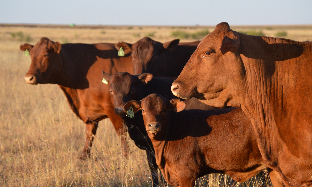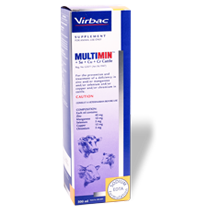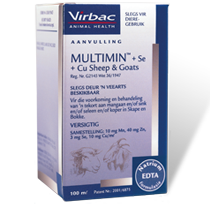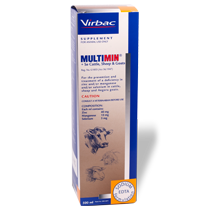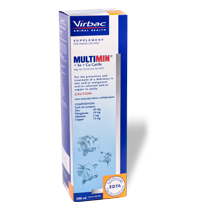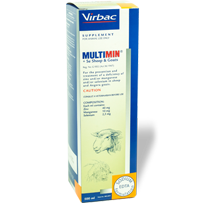
Trace-Element Supplementation and Optimal Animal Production
As is the case with unsatisfactory crop production, trace mineral imbalances and deficiencies are also the cause of many problems with animal production. We select for high-production animals and spend a lot of money on buying expensive bulls, but we do not necessarily adapt our feeding practices to supply the animal’s increased demand for trace minerals in critical stages of the production cycle. In view of the fact that South Africa is generally regarded as a country poor in trace minerals, trace mineral supplementation does not get the required attention.
A good trace mineral status is needed for animals’ optimal functioning. Although trace minerals are only required in low quantities, their effect is significant. Trace minerals play a key role in many bodily processes that affect reproduction, immunity, and production/growth. Among various other functions, they form an important part of many enzyme systems and hormone precursors, facilitating these processes.
Trace minerals can be described as the oil in an engine that lubricates it so that it runs smoothly and develops maximum power (optimal production). If the oil level is low (suboptimal levels of trace minerals), the engine is not necessarily going to fail, but performance will suffer and fuel consumption will increase (suboptimal production with associated financial losses). Only when the oil levels drop critically low will the temperature and oil warning lights illuminate (symptoms of clinical deficiency). The problem is that, once you see the warning lights, the engine is already damaged and repair costs can be high (drastic alteration of supplementation programme and big financial losses). This is why we must keep an eye on the oil level and top up when necessary (supplementation with trace minerals).
In figure 1, it is clear that first immunity, then maximum growth and fertility, and only then normal growth and fertility decrease along with dwindling trace mineral levels. The clinical symptoms are only observed at the last stage. It should be clear that the days of waiting for clinical symptoms to present before attending to trace mineral supplementation should be long gone. Instead, we should try to prevent suboptimal levels as far as possible to get the most out of our animals.
Figure 1: The effect of decreasing trace element status on animal production (Wikse,1992)
What does reduced immunity cost us?
Probably more than we suspect. Immunity is one of the production parameters that is difficult to measure and quantify yet is of critical importance. It is the first production parameter that suffers when trace mineral levels are suboptimal (as indicated in figure 1). Insufficient trace minerals are often the last thing that crosses our minds when looking for the cause of animal diseases and deaths.
The quality of the colostrum is affected by the cow’s trace mineral status during late pregnancy. The development of the calf’s immune system after birth is directly dependent upon the quality and quantity of the colostrum that it drinks directly after birth (see figure 2). Every calf that does not survive until weaning due to a weak immune system represents a direct loss of at least R7,700 (220 kg at R35/kg). And this does not even include indirect losses – the costs associated with the bull and cow to produce the calf.
Figure 2: Improvement in colostrum quality (IgG) after Multimin supplementation (Trial) (Ferreira, 2016)
Figure 3: Effect of Multimin supplementation on vaccine reaction (Arthington & Havenga, 2012)
Every bovine that dies from redwater, gallsickness, or pneumonia due to an immune system that does not function optimally costs us money. Every cow that must be treated after calving for retained placenta or inflamed uterus costs money. Every bovine that must be treated for foot rot, eye infections, mastitis, etc. increases production costs. What do we spend annually on a vaccination programme? Do we get value for money with the best possible immune response after vaccination? In figure 3 we can see how vaccine reaction improves when an injectable trace mineral supplement is administered together with vaccination. (The above information and remarks on immunity in no way implies that optimal trace mineral levels can prevent all diseases).
What does sub-optimal production cost us?
We know that reproduction is the single biggest factor affecting profitable animal production. By the time the calf is born, the cow has lost about 30% of her trace minerals to the calf, the amniotic fluid, and the afterbirth. The higher her trace mineral status during late pregnancy, the higher that of the calf at birth, and the higher the cow’s rate of recovery after calving, so she can come in season again.
Every heifer and cow that does not calf is a dead loss. Often, cows become pregnant, but resorption takes place and she comes in season again. This leads to extended periods between calving and cows that skip. For every day later that a calf is born in calving season, it weighs 1 to 1,5 kg less at weaning time. With an optimal trace mineral status (the animal’s condition being the most important prerequisite), cows come into season again sooner and the quality and quantity of the bulls’ sperm are optimal, so there are fewer matings yet more calves earlier in the calving season (see figure 4). Trace element supplementation alone cannot produce miracles, but there is solid proof that it contributes positively towards improved reproduction, even under unfavourable conditions (see figure 5).
What does decreased production/growth cost us?
We know that young, growing animals have the highest need for trace minerals. We also know that milk is a relatively poor source of trace minerals. The levels of copper and zinc in calves’ livers dwindle rapidly after birth. In figure 6 we can see that even calves that were born with a good status suffer a decline of 74% in their copper and zinc levels within 56 days of birth. Copper continues to decrease even further. If calves are not born with a good status (by supplementing the cow during late pregnancy), one can expect that they will quickly regress to a low-status condition. This can have a negative effect on calves’ immunity (causing diarrhea) and reduce their growth (lower weaning mass). Copper is very important to maintain the integrity of the gut wall and zinc plays an important role in appetite and fast-dividing cells (growth).
Figure 4: Effect of Multimin supplementation on conception and calf distribution (Mundell et al, 2012)
Figure 5: Effect of Multimin on calving percentage
Figure 6: Copper and zinc levels in calf’s liver (Barnum J, 1990)
Figure 7: Effect of Multimin supplementation on the growth of heifers (Virbac Australia – data on file)
Supplementing feedlot calves not only reduced the incidence of diseases, but also improved the development of eye-muscle surface area and improved the dressing percentage (Genther & Hansen, 2014b).
TYPES OF SUPPLEMENTS
Trace elements are normally included in most commercially available licks and full feeds. They are essential to meet the animal’s basic and daily needs. It is important to remember that animals’ trace element requirements do not stay the same but vary according to age (young animals have a higher need) and production phase (e.g. pregnancy, lactation, wean, other stress conditions, etc.). At these critical times in the production cycle, trace mineral intake through pasture and licks may be insufficient to meet the animal’s higher needs, especially if the animal’s general status is suboptimal to start with.
The variation in lick intake between animals further exacerbates the problem of insufficient intake. Dominance in the herd, lick-trough overcrowding, and irregular lick supply contribute to inconsistent and/or insufficient intake. Added to that, antagonists in the water, soil, and pastures (especially calcium, sulphur, and iron – see figure 7) can negatively affect the absorbability of trace elements. These antagonists bind with the trace elements and reduce their absorption in the gut. Some feed mixes contain organic trace elements or a combination of organic and inorganic trace elements to help improve availability.
The best way to overcome all the possible disadvantages of oral supplementation is to use a balanced, injectable trace mineral combination product such as Multimin® as a top-up supplement before critical periods. This is a sure and timely way to overcome antagonism and inconsistent intake during these periods when the animals have a high need for trace minerals. Injectable trace elements are transported within hours via the bloodstream from the point of injection to the liver, where they are stored. Their absorption is therefore not affected by the antagonists in the gut at all. That is why Virbac recommends a two-pronged supplementation strategy.
It is strongly recommended that vitamins A and E are administered together with every Multimin supplementation. Vitamin A works synergistically and supports the action of zinc, and vitamin E supports the action of selenium. Vitamins A and E should, however, be in sufficient quantities to contribute meaningfully and should be administered separately for the best results.
SUGGESTED MULTIMIN SUPPLEMENTATION PROGRAMME
Bulls: 90 days before the breeding season and again at the start of the breeding season. (Alternatively, bulls can be supplemented every 4 months). Use Multimin + Se + Cu Cattle at 1 mℓ / 100 kg.
Cows: 4-6 weeks before calving and again 4 weeks before the start of the breeding season or AI. Use Multimin + Se + Cu + Cr Cattle at 1 mℓ / 100 kg.
Suckling calves: At age 2 to 3 months (Multimin + Se + Cu + Cr Cattle at 1 mℓ / 50 kg) and again at, or preferably before, weaning (1 mℓ / 75 kg). If cows were not treated before calving, or new-born calves have problems with diarrhea, the calves can get a supplementation 1 week after birth (1 mℓ / 50 kg).
Replacement heifers/bulls: Every 3 months after weaning until they fall in with the adult animals’ programme (Multimin + Se + Cu + Cr Cattle at 1 mℓ / 75 kg).
Multimin contains the most important trace minerals in a balanced, tissue-friendly, and highly bioavailable formulation: Zn, Mn, and Cu (EDTA-chelated), sodium selenite (which is built into functional protein straight after administration and is immediately available to support enzyme functions in the period of high need), as well as chromium (especially for cows and young, growing animals).
For more information on Virbac’s top-up concept with Multimin, as well as help with the right choice of product in every situation, contact your nearest Virbac Technical Sales Advisor.
References:
Arthington J, Havenga L (2012). Effect of injectable trace minerals on the humoral immune response to multivalent vaccine administration in beef calves. Journal of Animal Science 90, 1966-1971
Barnum, Jay Christopher (1999). “Impact of Prenatal Dietary Copper Level on Copper status.” Submitted to the office of graduate studies of Texas A&M University. May 1999.
Ferreira GM (2016). Multimin CPD
Genther ON, Hansen SL (2014b). Effect of dietary trace mineral supplementation and a multi-element trace mineral injection on shipping response and growth performance on beef cattle. Journal of Animal Science 92, 695-704. Doi:10.2527/jas.2013-7066.
Mundell et al, 2012. Effects of prepartum and postpartum bolus injections of trace minerals on performance of beef cows and calves grazing native range. The Professional Animal Scientist 28, 82-88. http://krex.k-state.edu/dspace/handle/2097/13567.
Watts D (1990). Nutrient Interrelationships. Journal of Orthomolecular Medicine 5, 11-19. http://m.traceelements.com/Docs/Nutrient Interrelationships-Minerals-Vitamins-Endocrines.pdf.
Wikse S (1992). Beef Cattle short course. In “Texas A&M Vet. Beef Cattle Short Course”, College Station, Tx, USA. (Texas A&M University: College Station, TX, USA)
60092312AR

